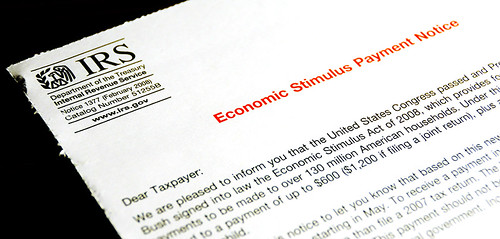President Joseph Biden has proposed his American Rescue Plan, a $1.9 trillion stimulus package to Congress to provide financial relief to those that have been the most affected by COVID-19. His package includes a $1,400 stimulus check, renewing federal unemployment benefits and increasing the funding for COVID-19 vaccine distribution.
The weekly additional $300 federal unemployment benefits are set to expire in March if the legislation does not get approved. Within the new stimulus package, the House’s plan includes an additional $400 in federal unemployment benefits that would extend until August.
In order to get the bill onto Biden’s desk quickly, Congressional Democrats are trying to utilize a legislative technique called “reconciliation.” This will allow them to avoid anticipated Republican objection to the bill in order to get it passed quicker.
However, the reconciliation tool has strict limits on what is and isn’t allowed to be included in the bill. The Democrats’ plan to raise the minimum wage was eliminated by the Congressional parliamentarian as well as canceling a certain amount of student-loan debt.
This $1,400 stimulus check may be subject to new rules to restrict the checks to lower income citizens than those who previously qualified for the first two payments. The Biden administration and Congressional Democrats are also aiming to integrate adult dependents as well as children and families of mixed citizenship status within the bill. It is estimated that 13.5 million college students were excluded from the previous relief packages.
Dr. Kareem Tannous, business professor, said that those who receive stimulus checks are based on their income levels and if they meet the requirements.
On adult dependents potentially qualifying for the aid, he said “it is always a good idea to ensure people are qualified legitimately before releasing government aid to anyone.”
The thresholds for each recipient approved for stimulus checks are $75,000 for individuals; $112,500 for those who file as “head of household,” and $150,000 for married couples.
Here’s how much each person could receive:
- Qualifying individuals: $1,400
- Qualifying couples who file taxes jointly: $2,800
- Child dependent under the age of 17: $1,400
- Qualifying adult dependents: $2,000

“Money” (CC BY-SA 2.0) by 401(K) 2013
Tannous, said that the stimulus checks will benefit the economy in the short-term by providing assistance to those who are affected by the pandemic. These checks are ultimately given to the recipients so that they spend money in order to boost the economy.
“However, in the long-run, the stimulus checks devalue the U.S. dollar causing asset prices to rise,” Tannous said.
After the first two rounds of stimulus packages, the distribution process has improved. Now that the IRS has details on file for the majority of recipients, it is hopeful to say that the third round will go smoothly.
The challenge, however, with this round is that it is also tax season. The IRS is now responsible for the tax system and the stimulus check distribution. The deadline to file taxes is April. 15. However, it still may interfere with the quick distribution of checks.
After the bill is signed into law by Biden, those who have direct deposit set up with the IRS will get their check first. The deposits could potentially arrive just one week after approval.
Next, paper checks will be delivered approximately two weeks after the bill is signed.
Those who have an Economic Impact Payment debit card and do not have access to a bank account, the card will have to be produced and will be delivered around three weeks later.
House Speaker Nancy Pelosi is aiming to vote in the Democratic controlled chamber on passing the bill by the end of the week (Feb. 28).
On Friday Feb. 19, Senate Majority Leader Chuck Schumer said his divided chamber would pass the bill before March. 14, when the federal unemployment benefits expire. The Senate voted 50-49 to approve the bill on Saturday, March 6.
Now the House will now have to reconcile its slightly differing version of the bill with the Senate’s before Biden signs the American Rescue Plan into effect by law. That should happen the week of March 8, 2021.



